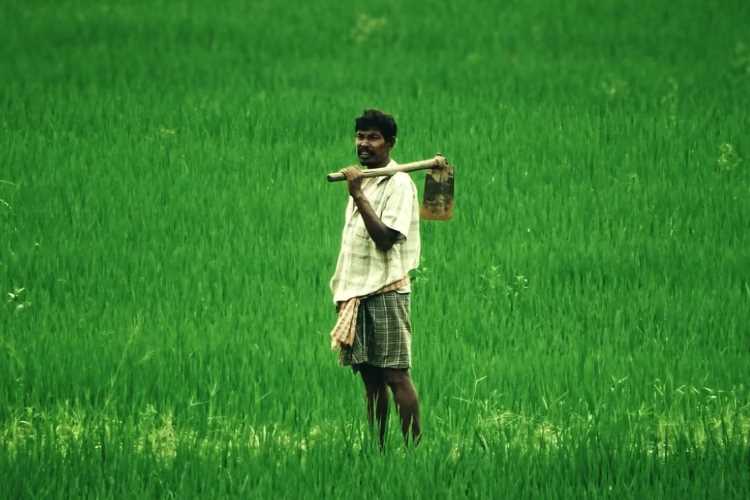
By Surabhi Mittal
Financial inclusion in agriculture: NITI Aayog has prepared a document on how digital technologies and Artificial Intelligence will revolutionise agriculture in India. The report says the use of technology will enhance productivity and bring efficiency in agricultural value chains, touching the lives of Indian farmers by adding $9 billion to their incomes. These modern tools and technologies can make India a digitally inclusive nation. Though around 80% of rural households in India have access to mobile phones, smart phones and internet are beyond the reach of farming households. Mechanised farming and modern seeds took years to reach Indian farmers and the pace of adoption of modern agricultural technologies is slow.
The government has launched a financial inclusion programme to enhance access to credit in rural areas. In his speech at the United Nations on July 17, 2020, Prime Minister Narendra Modi highlighted the government’s efforts to open 400 million bank accounts for the unbanked and leverage technology for financial inclusion. During the economic crisis triggered by Covid-19, finance minister Nirmala Sitharaman has announced relief funds at concessional interest rates to farmers. This is a good short-term measure to tide over credit crunch and it assumes that there is an effective institutional structure that will bring these benefits to the needy. But financial access still remains a distant dream for agricultural households.
READ I Farmers protest: Is contract farming a bad thing for farmers?
India has an estimated 12.5 crore small and marginal farmers, according to the Agriculture Census of 2015-16. These farmers together control around 86% of the available farm land and have a 47% share in the operated area. Of these, only 41% is covered by banks. Financial inclusion is defined on the parameters of borrowings, savings, investment, insurance, pension, and remittances.
The All-India Rural Financial Inclusion Survey 2016-17, conducted by NABARD, showed that only 29% of agricultural households reported savings in the previous year with institutions like banks, post offices and SHGs. About 52.5% of the agricultural households have debts. Only 26% of the agricultural households have any type of insurance coverage, of which 6.9% have crop insurance and just 1.7% have livestock insurance. Only 32 per cent of the senior citizens from these households are covered by old age pension.
READ I Farmers protest: Holistic approach to farming key to ending agrarian distress
Another report on agricultural credit reveals that allied agricultural activities like livestock, forestry, and fisheries receive only 10% of the total agricultural credit, although their total contribution to the agricultural output is close to 40%. There also exist regional disparities in credit, which is particularly low for states in the central, eastern, and north-eastern regions of the country.
These numbers are in terms of quantity and they do not reflect the quality or quantum of credit, insurance, or pensions. The current level of financial inclusion is not sufficient to facilitate the penetration of technological revolution to the bottom of the pyramid. There is, in fact, a larger group of rural landless farmers and livestock owners about whom there is no information on financial indicators.
READ I Farmers protest: Market-friendly options for ensuring MSP
The challenge of financial inclusion
The agricultural census defines farmers by their land holdings. So, land records are seen as the key instrument to access credit. The financial institutions have no clarity on how to provide credit to individuals engaged in allied activities like fisheries, livestock forestry and also to tenant farmers. This also means that the small and marginal farmers are unable to benefit from government programmes, policies, and loan wavers. They are forced to depend on informal and non-banking sources of credit, and fall victims to loan sharks. The challenge is how to give them access to credit and ensure their livelihoods and enable them to adopt modern technology.
There is a need to give allied agriculture sector access to priority lending by financial institutions. This has to be done through policy interventions that offer farmers a viable, immediate path to access institutional credit. A solution to this problem can be found by enhancing farmers’ access to asset-collateralised loans. A study by Action Poverty Lab has shown that about 44% of farmers who were offered collateralised loans decided to take them. Assessing creditworthiness can be a challenge for financial institution in the case of small and marginal farmers. In such cases the services of technology and fintech players can be used.
READ I Why Narendra Modi govt must address farmers protest
There is a need to utilise innovative solutions to expand the reach of institutional credit. Programmes, policies, and projects need to be initiated in this direction so that they can help improve access to long-term institutional credit, helping people in agriculture and allied sectors enjoy the benefits of financial inclusion.
(Surabhi Mittal is an agricultural economist and independent consultant. The views expressed in this article are personal.)
